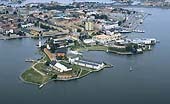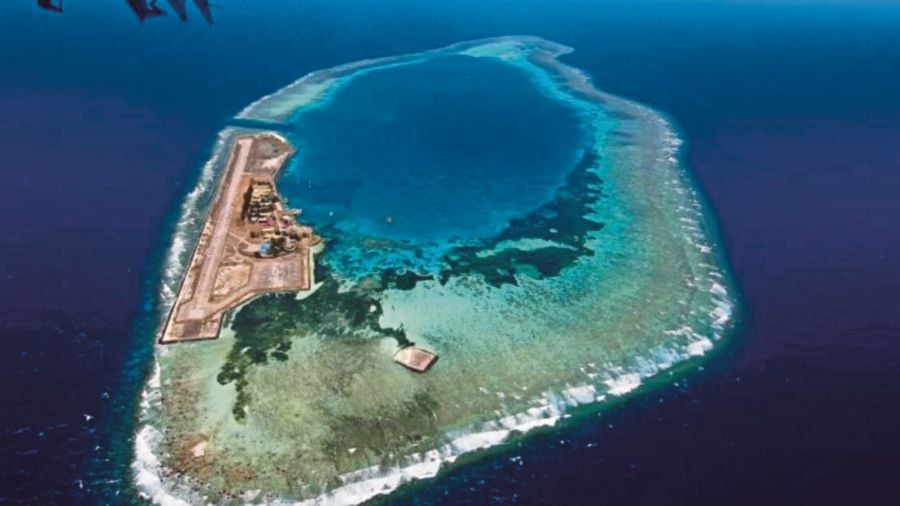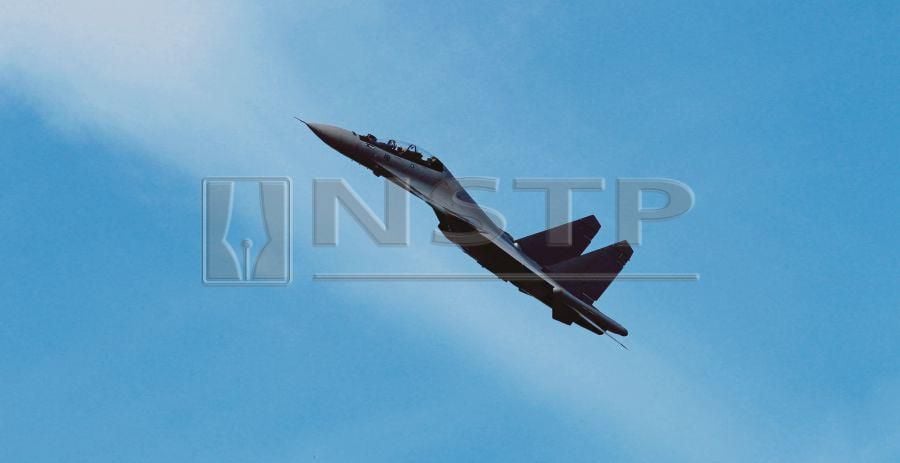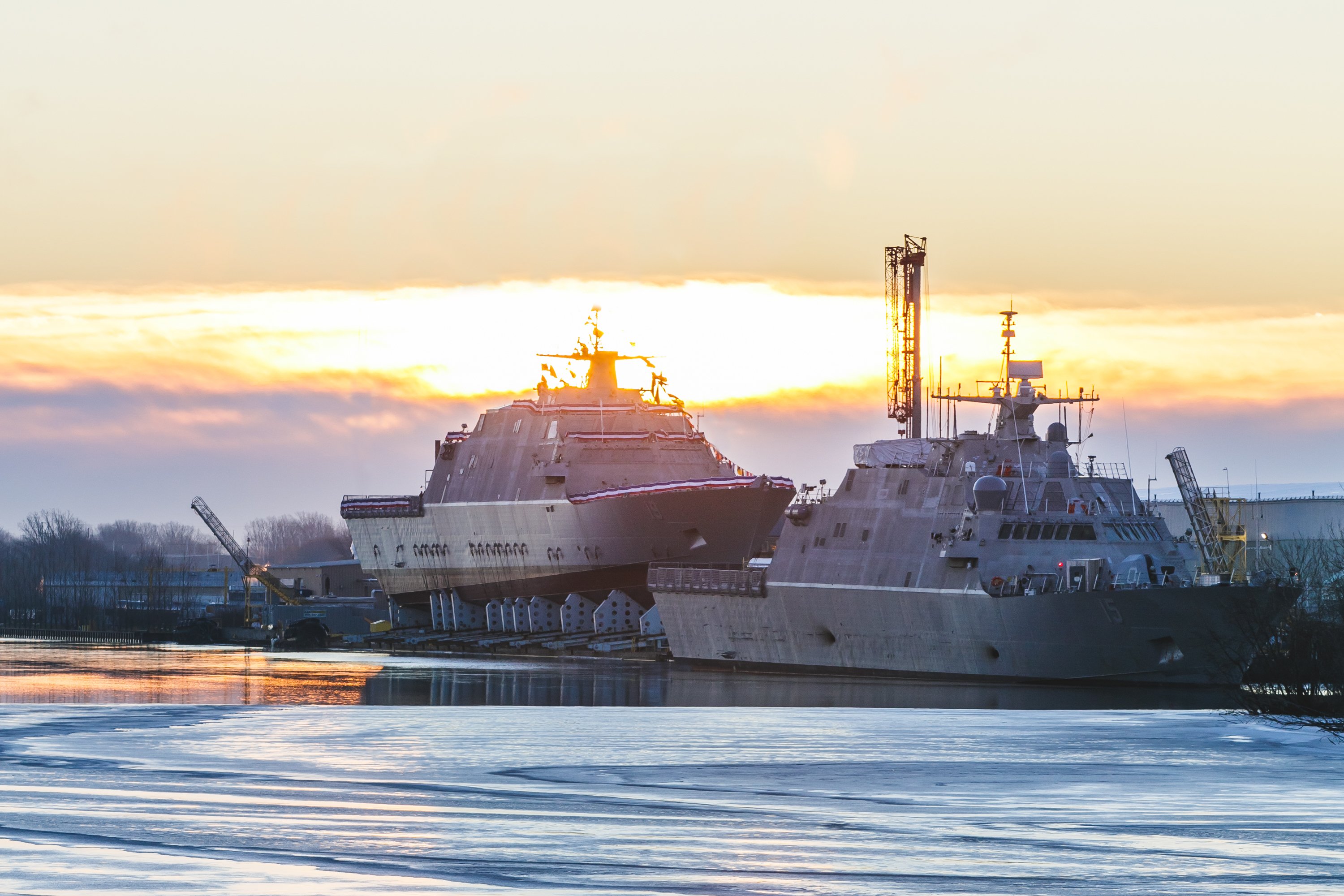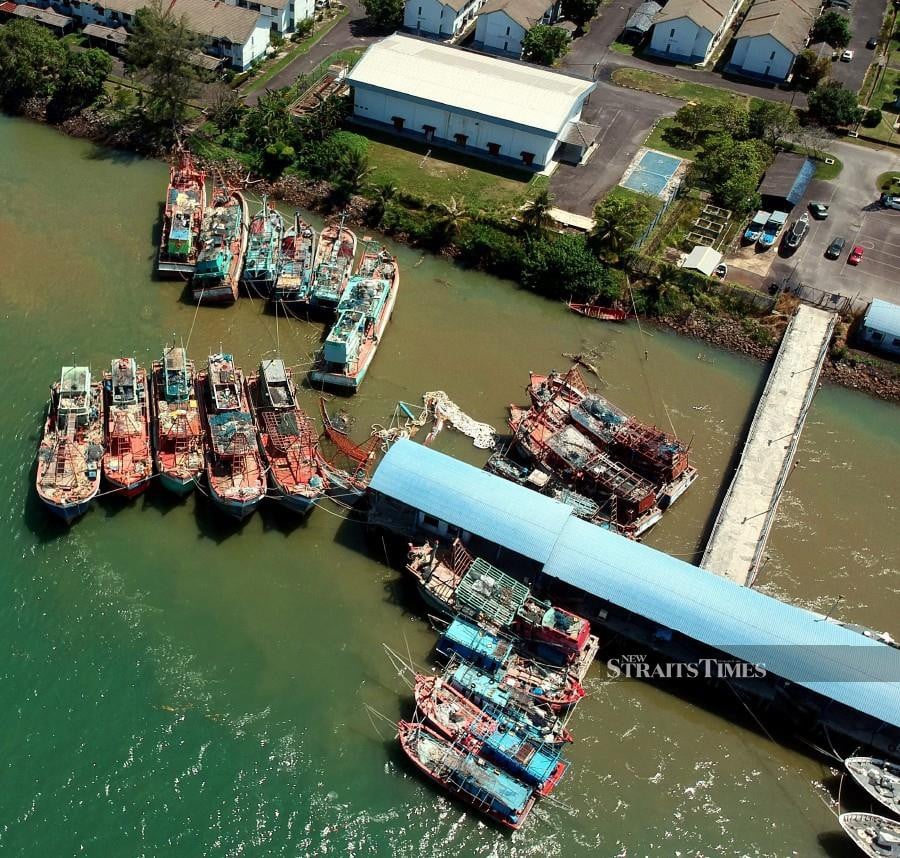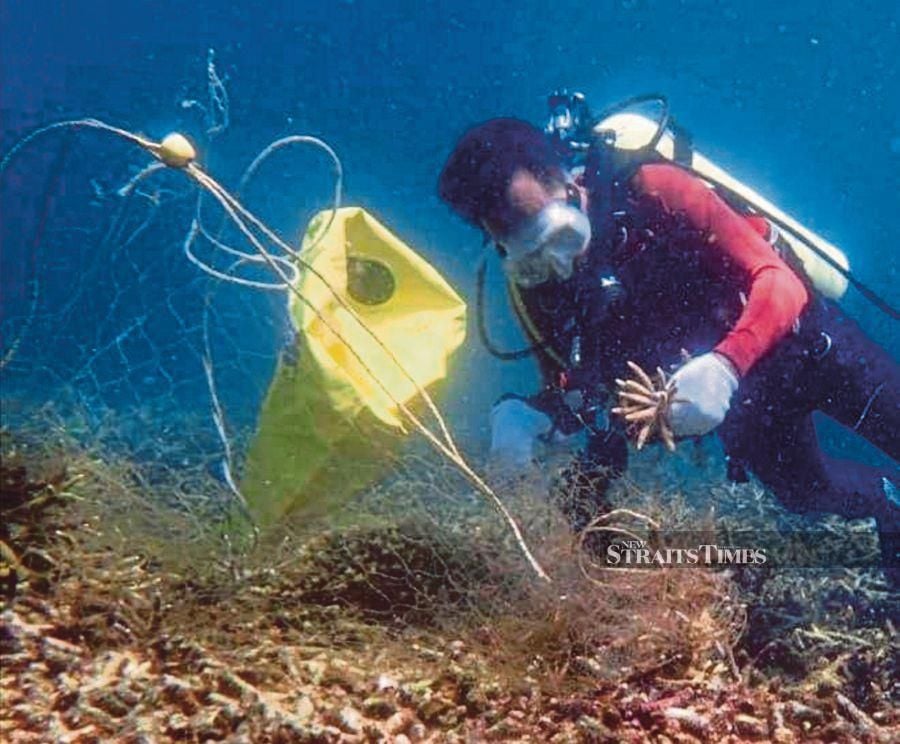Photo shows an aeriel view of the Spratlys
It takes a lot to protect our Spratlys 'territories'
KUALA LUMPUR: IT takes an enormous amount of energy, resources and money to maintain and safeguard Malaysia’s territories in the Spratlys.
While the Royal Malaysian Navy’s (RMN) special forces (known by their Malay acronym Paskal) have the arduous task of overseeing security, defence engineering companies were commissioned to improve the facilities and carry out expansion of the claimed “territories” into islands.
Malaysia’s serious claim on the Spratlys archipelago was mooted and envisioned by Prime Minister Tun Dr Mahathir Mohamad during his first premiership tenure (1981-2003 ).
However, Dr Mahathir, who returned to power as prime minister last year, is employing diplomacy through an Asean initiative to resolve disputes with China, which is laying entire claims on its “nine-dotted line” maritime boundary.
Dr Mahathir is all for freedom of navigation through the Spratlys and naval patrols toward off pirates and other criminals, but is against the deployment of large warships, which could spark confrontations among stakeholders.
Officials from enforcement agencies, and the maritime and defence industries, who declined to be named, gave an account of the routine involved and the assets deployed, to safeguard and maintain Malaysia’s sovereignty.
They said apart from the RMN’s Station Lima at Swallow Reef (Terumbu Layang-Layang), occupied since 1983, Malaysia has deployed its naval special forces at Station Mike (Terumbu Mantanani or Mariveles Reef ) and Station Uniform (Terumbu Ubi or Ardasier Reef), both occupied sinc e 1986, Station Sierra (Terumbu Siput or Erica Reef) and Station Papa (Beting Peninjau or Investigator Shoal), both occupied since 1999.
“Each of the four Spratly stations was initially brought as a barge and later modelled after a 40ft by 70ft naval patrol vessel, complete with facilities for dining, sleeping, communication and survival,” said one of them, who is familiar with the construction and expansion projects.
A retired naval commando said RMN utilised CB90 fast assault boats for three-week tour of duties.
“RMN had purchased 32 such boats, which operated out of Kota Kinabalu and Sandakan in Sabah, Lumut in Perak, Langkawi in Kedah and Kuantan in Pahang.
“Each CB90, powered by two engines, has a crew of six but can accommodate 14 additional personnel,” he said.
According to him, the CB90s, capable of 40 knots and armed with machine guns, were used to forewarn unauthorised vessels from encroaching on waters off
the four Malaysian “territories”.
“The naval commandos will use the International Maritime Bureau’s Channel 16 to reach the intruders.
“They will direct them to change to a different communication channel to give them orders to leave or otherwise,” he said.
A retired admiral said a Meko Class new-generation patrol vessel (NGPV) was deployed around-the-clock to monitor the five Spratly “territories”.
“Each NGPV is deployed on a 20-day tour before it returns for replenishment and maintenance at the RMN Sepanggar base in Kota Kinabalu.
“It is capable of self-sustenance, including converting salt water into fresh, drinkable water via reverse-osmosis process.”
He said to optimise resources and fuel, the NGPV would operate on one of its two engines, unless it encountered adverse weather and stormy seas.
“It would take an NGPV, cruising at 15 knots, about 12 hours to travel from Station Lima to one of the other four stations, or about 18 hours from Teluk Sepanggar.
“Along the route, the vessels have to be wary of corals in shallow waters, some only a metre deep, compared with the 2,000m ocean depth,” he said.
A defence industry source said RMN operated six NGPVs — KD Kedah, KD Pahang, KD Perak, KD Terengganu, KD Kelantan and KD Selangor.
“There are two NGPVs at the RMN base in Kuantan, Pahang, and four in Kota Kinabalu.
“RMN is stretched, owing to insufficient vessels to meet its operational needs and budgetary constraints.”
Each NGPV can accommodate a crew of 25, including its skipper.
The New Straits Times Press learnt that each NGPV was equipped with, among others, a 76mm Auto Melara anti-ship gun, 30mm Oerlikon cannon, three dimensional surface-to-air radar (can capture range, altitude and speed of an enemy vessel) and a helicopter pad complete with a hangar.
The Royal Malaysian Air Force’s Sukhoi Su-30MKM used in surveillance over the South China Sea
Spratly Archipelago: Conflict at sea?
MARITIME security in the South China Sea is under threat due to alleged offensive militarisation and political hostility involving two state actors perceived to be advocating new grand strategies in Southeast Asia.
The threat is not because of piracy, but geopolitics and alleged naval power competition.
This phenomenon is dangerous to Malaysia as a non-aligned state with a neutral foreign policy, and a claimant to several maritime features in the Spratly Archipelago.
This is due to the fact that Malaysia’s bilateral relations with the two actors are asymmetrical in nature.
How will Malaysia react if the current tussle escalates into an open conflict; will it be dragged into this situation?
Malaysia entered the Spratly Archipelago in 1983, while China was still with its Cold War priorities, and the United States had retreated from Southeast Asia after its defeat in Vietnam.
This was possibly the main reason why Malaysia had secured its sovereignty in the Spratly Archipelago through defensive militarisation, by converting Swallow Reef into an artificial island (Swallow Island) and making it a permanent military base in the South China Sea.
Secondly, Malaysia had chosen militarisation to deter other claimant states, including China, from encroaching on its territories in the archipelago.
Thirdly, this defensive militarisation was aimed at protecting Malaysia’s vast natural resources, mainly oil and gas, as well as fisheries.
True enough, the sovereignty claims in this archipelago involved states of diverging military capabilities, foreign policy orientations and international security objectives.
But Ralf Emmers (a post-Doctoral Fellow in Asian Security at the Institute of Defence and Strategic Studies, Nanyang Technological University, Singapore) wrote in his book (2010) that these disputes only intensified when China started occupying several maritime features in the South China Sea in 1987.
However, Fu Ying, chairperson of the Foreign Affairs Committee of China’s National People’s Congress, and Wu Shicun, Vice chairperson of the China Centre for International Economic Exchanges, wrote in the South China Morning Post (July 8, 2016) that the disputes intensified due to “the discovery of abundant oil reserves in the Nansha waters in the late 1960s”.
Fu and Wu also wrote: “From the perspective of many Chinese people, the US is the invisible hand behind the rising tension in the South China Sea.”
First, “the US is increasingly targeting at China as it steps up its Asia-Pacific rebalance strategy.
In 2013, the US announced to reinforce its military presence in the Asia-Pacific region by deploying 60 per cent of its fleet and 60 per cent of its overseas air force to the region by 2020”.
Second, “the US military has purported to be threatened by ‘China’s anti-access and area denial efforts’, and actively promoted some operational concepts like Air-Sea Battle, with China as a main target”.
Third, “these moves have undoubtedly further complicated and intensified the situation in the South China Sea and in the Asia-Pacific region”.
Fourth, “since 2014, the US has made clearer responses to China in the South China Sea, in postures of direct intervention in the disputes and often in favour of other claimants, especially its own allies”.
The US is now under President Trump, hence do the above reasons reflect the truth, and is the current situation in the South China Sea motivated by similar reasons?
In this context, a report from a news portal and local daily said that “China expressed anger after a United States Navy destroyer, the USS Decatur travelled within 12 nautical miles of Gaven and Johnson Reefs in the Spratly Islands”.
The report also quoted Prime Minister Tun Dr Mahathir Mohamad as telling the BBC on Oct 2 that “Malaysia’s policy is not to have battleships and warships in the South China Sea as tensions in the region will escalate into armed conflict and subsequently war if vessels are stationed in the area”.
In an exclusive interview with the South China Morning Post (June 19), Dr Mahathir was quoted as saying: “I think there should not be too many warships. Warships create tension.”
He also said, “someday, somebody might make some mistakes and there will be a fight, some ships will be lost, and there might be a war”.
But when asked whether his new government’s position on the South China Sea would differ from Malaysia’s previous administration, the report said: “Dr Mahathir said he just wanted Malaysia to continue occupying the disputed islands that it currently holds.”
These two news items indicate that the new Malaysia does not want to be dragged into the current development in the South China Sea.
They also reflect that Dr Mahathir’s earlier policy on these disputes might not change.
Thus if ever there is an adjustment, it might only focus on Malaysia’s new perspective that big powers’ geopolitics in the South China Sea must avoid war.
Will Asean, with its cordial relations with China and the US, be taking a similar approach concerning this issue?
| 